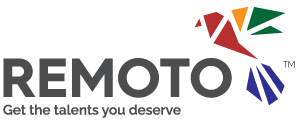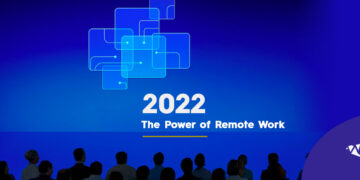Picture this: You’ve got an open role, and you’re eager to bring in top talent. You draft what seems like a solid job description, post it online, and then… silence. Or worse, you get flooded with applications from people who don’t match the role at all.
The problem often lies in how the job description is written. Many companies unintentionally create listings that confuse, intimidate, or discourage the right candidates from applying. A well-crafted job description isn’t just a checklist of responsibilities—it’s an opportunity to connect with the right people and invite them into your company’s story.
Crafting a compelling job description requires more than listing qualifications. It involves drawing candidates in, making them feel valued, and showing them why your company is the right place for them. Let’s break down the key elements of job descriptions that attract qualified, enthusiastic candidates while filtering out those who aren’t the right fit.
Hook Them with an Attention-Grabbing Job Title
Job seekers often skim through dozens of listings in a matter of minutes, so if your job title isn’t clear, compelling, and searchable, you’re already losing potential candidates.
Clear titles are important. Titles with vague, unusual language like “marketing expert” or “software genius” may sound fun to people who work for you, but they can be confusing or even alienating to job seekers. Instead, using a precise and industry-standard title such as “senior digital marketing manager” or “front-end developer” ensures your listing reaches the right audience.
Specificity also plays a crucial role. Rather than using broad terms like “territory sales manager,” refining it to “enterprise SaaS sales manager” immediately tells candidates whether they fit the role. An overly creative title may also impact searchability, making your job harder to find on job boards and search engines.
While it might be tempting to add a little flair, avoid using words like “ninja” or “superstar.” These terms, though playful, can prevent professionals who may take the job search more seriously. Sticking to clear and recognizable job titles makes it easier for candidates to recognize the opportunity and feel confident about applying.
Start with a Story, Not a List of Demands
Many job descriptions begin with a long, impersonal list of responsibilities, making them feel like a dull set of demands rather than an invitation to an exciting opportunity. Instead of diving straight into requirements, start by telling a story about the company and why the role exists. Rather than simply stating, “We’re a fast-growing startup,” paint a picture of the company’s journey.
For example, you could introduce the company like this: “In just three years, we’ve grown from a small team of five to a thriving company of 150, helping over 1,000 clients transform their operations with AI-driven solutions. Now, we’re looking for a passionate UX designer to help us take our product to the next level.”
This approach gives candidates a reason to feel excited about joining your company.
Emphasizing the impact of the role also makes a difference. Job seekers want to know that their work will matter. Instead of a generic statement like “Our company is looking for an experienced Project Manager who will oversee operations,” shift the focus by saying, “As our Project Manager, you’ll lead cross-functional teams and streamline workflows to improve efficiency by 30%.”
Framing the description around the candidate’s contribution fosters a sense of purpose and belonging.
Define Responsibilities Without Overwhelming Candidates
A job description should clarify expectations without making the role feel overwhelming. Many companies make the mistake of including exhaustive lists of responsibilities, which can prevent candidates who feel they may not be able to handle everything listed.
Instead of looking at minor details, concentrate on the bigger picture and describe how the role fits within the company’s overall mission.
Focusing on outcomes rather than tasks makes the description more engaging. Instead of saying, “,manage social media accounts,” you can say, “develop and execute a content strategy that increases engagement by 20% in six months.” This approach gives candidates a clear understanding of what success looks like in the role.
Keeping the list of responsibilities concise is crucial. It may be tempting to include every small task, but focusing on the most important parts makes the job more appealing than scary. Organizing the tasks in a way that shows the main tasks lets candidates see if the role matches their skills and interests.
Set Expectations Without Creating a Unicorn Wishlist
Many job descriptions fail to attract strong candidates because they are loaded with excessive and unrealistic requirements. Often, hiring managers list every possible qualification, unintentionally discouraging well-qualified candidates from applying simply because they don’t meet 100% of the criteria.
A better approach is to differentiate between essential skills and nice-to-have qualities. If a particular skill or qualification is not an absolute necessity, it should be framed as a bonus rather than a requirement. For instance, requiring a master’s degree when equivalent experience would suffice may unnecessarily limit the talent pool.
Being mindful of language is also important. Phrases like “aggressive go-getter” or “dominant leader” might unintentionally exclude candidates from diverse backgrounds who do not align with these descriptors. Using inclusive language that emphasizes collaboration, creativity, and problem-solving makes the job description more appealing to a wider range of professionals.
Sell the Benefits—Because Candidates Are Shopping, Too
A job description shouldn’t be solely about what the company needs—it should also highlight what the candidate gains by joining. If you want to attract top talent, you need to communicate what makes working for your company worthwhile.
Beyond just listing a salary, stress benefits that matter to today’s workforce. Candidates care about work-life balance, career growth opportunities, and company culture just as much as they care about compensation. If your company offers remote work, flexible hours, mentorship programs, or professional development opportunities, mention these perks clearly.
Transparency plays a significant role in attracting strong applicants. Including a salary range demonstrates honesty and helps set realistic expectations. Many job seekers appreciate this upfront approach, and it can lead to a more efficient hiring process by filtering out candidates who may have different salary expectations.
Close with a Clear Call to Action (CTA)
After crafting an engaging and informative job description, it’s essential to guide candidates on what to do next. Many job postings end abruptly, leaving applicants unsure of how to proceed. Clearly instructing them on how to apply removes any ambiguity and increases the likelihood of strong applications.
Rather than a vague statement like “Apply now,” provide direct instructions, such as “To apply, submit your resume and a short cover letter explaining why you’re excited about this role.”
If the hiring process involves multiple steps, outlining the expected timeline helps set expectations. Candidates appreciate transparency, and knowing when they’ll hear back adds to their confidence in the process.
A strong job description also encourages a diverse pool of applicants. Instead of rigidly insisting on every listed qualification, a simple statement like “If you don’t meet every requirement but are excited about this role, we’d love to hear from you” can make a big difference.
Many qualified candidates hesitate to apply if they feel they don’t meet every single requirement, so a welcoming tone can lead to a broader and more diverse applicant pool.
The Best Candidates Choose Companies That Speak Their Language
Attracting top talent in the Top 10 In-Demand Jobs in the U.S. for 2025 starts with rethinking how job descriptions are written. Instead of treating them as rigid lists of demands, they should be seen as invitations to a meaningful career.
By prioritizing clarity, inclusivity, and engagement, companies can fill roles more effectively while building teams that are genuinely excited to contribute. A well-crafted job description not only attracts great candidates but also sets the tone for a positive employer-employee relationship from the start.
It’s time to stop chasing candidates and start drawing them in. A job description that resonates can make all the difference.














